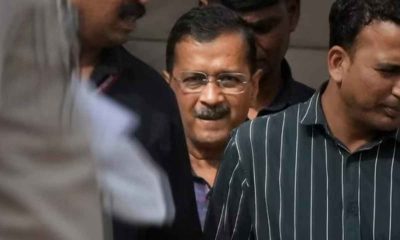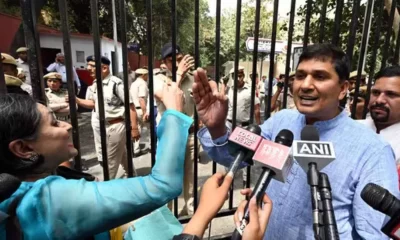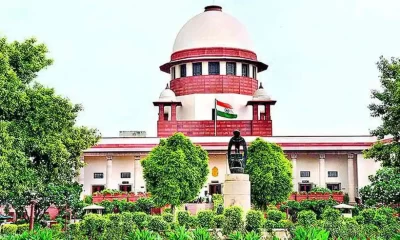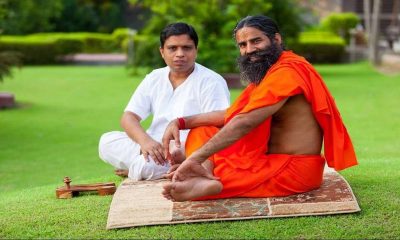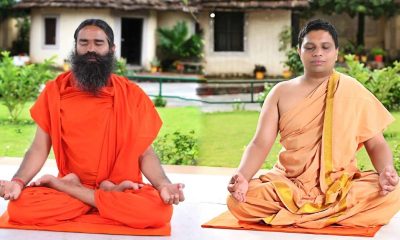India News
AES deaths in Bihar: Supreme Court to hear plea for urgent action on Monday
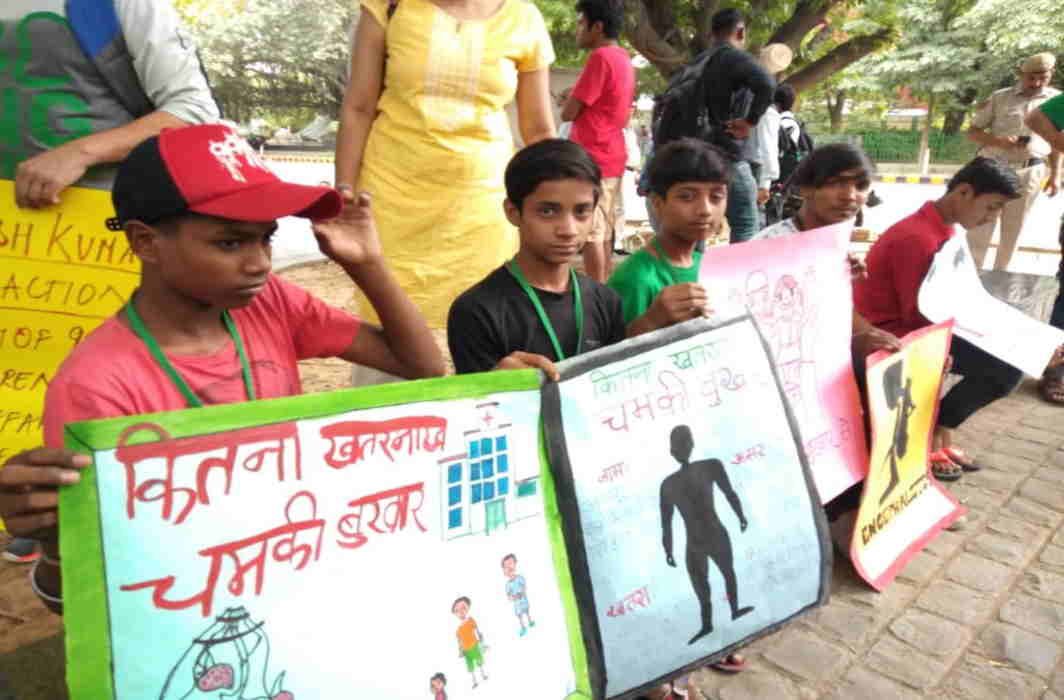
[vc_row][vc_column][vc_column_text]As the number of children dying of Acute Encephalitis Syndrome (AES) in Bihar crossed 120, the Supreme Court today (Wednesday, June 19) agreed to hear on Monday a plea seeking direction to the Centre to urgently constitute a team of medical experts to address the health crisis.
A vacation bench of justices Deepak Gupta and Surya Kant agreed to hear the plea next Monday after the petitioner’s counsel sought an urgent listing of the matter.
The outbreak of AES in Bihar has killed 130 children, reported NDTV. In Muzaffarpur’s Sri Krishna Medical College and Hospital, 93 children have died. Another 19 died at the city’s Kejriwal Maternity Hospital.
The National Human Rights Commission, said media reports, has sent notices to the Union Health Ministry and Bihar government, who have four weeks to respond.
The petition filed by advocates Manohar Pratap and Sanpreet Singh Ajmani in Supreme Court seek a direction to the Centre and the State of Bihar to arrange for 500 Intensive Care Units (ICU) along with the requisite number of medical professionals to deal with the outbreak, arrangement of 100 mobile ICUs and to set up a medical board to be sent to Muzaffarpur, the epicentre of the crisis.
The petitioner also sought that all necessary medical equipment be provided by the Centre for the effective treatment of the children.
The petitioners claim that the State of Bihar has failed to take steps to prevent the spread of Encephalitis and thus the Court’s intervention in the situation becomes imperative.
They say there is a “complete failure of state machinery” in dealing with the situation and the continuing act of negligence of the part of the State of Bihar is leading to the violation of Right to Life guaranteed under the Constitution of India.
“Despite death of more than 100 children, state govt. has shown no prompt steps to prevent the spread of the said disease in adjoining districts. The present act of the negligence by the Respondents who are state within the framework of India Constitution has resulted in death of hundreds of young innocent lives. This continuing act of negligence on the part of state is consistently violating the fundamental right to life guaranteed under the Article 21 of the Constitution of India,” the petition says.
The petitioners have also cited media reports to say that the medical professionals are unable to control the deaths in Muzaffarpur on account of lack of facilities and trained professionals.
The petitioners have also prayed for a direction to the State of Bihar to notify an extraordinary government order directing all private medical institutes in the area of Muzaffarpur to provide free medical treatment to the affected patients.
The petition also seeks the constitution of a fact-finding committee to look into the role of negligent persons involved.
Prayer has also been made to disburse compensation to the tune of Rs. 10 lakh to the families of those persons who lost their lives due to State’s negligence.
In Bihar, amid mounting criticism and protests, Chief Minister Nitish Kumar visited Muzzaffarpur yesterday for the first time since the outbreak began. He was met with cries of “Wapas jao (go back)” at the Sri Krishna Medical College.
Union Health Minister Harsh Vardhan, a doctor, who visited on Sunday, said “everyone is taking responsibility” and the government is “delivering the best it can”.
Bihar Health Minister Mangal Pandey and Muzaffarpur MP Ajay Nishad came under attack for shocking responses to the outbreak. Pandey drew widespread criticism for inquiring about an India-Pakistan cricket match at a press conference held by Union Health Minister Harsh Vardhan. Nishad drew flak for claiming the state government made just a “few tiny mistakes” in tackling the outbreak.
State Chief Secretary Deepak Kumar told reporters in Patna that the CM was satisfied with medical facilities at SKMCH. Nitish also ordered 24-hour availability of doctors to deal with emergency situation, the chief secretary added.
Hospitals, struggling to deal with the situation, are admitting four children to a bed. There are not enough doctors or equipment to handle the outbreak.
Acute Encephalitis Syndrome, a viral infection, is a bunch of diseases that include hypoglycemia, dyselectrolytemia, chicken pox, Japanese Encephalitis positive and AES unknown. AES outbreaks are routine in areas in and around Muzaffarpur during summer, and mostly affects children below 15 years of age.
It can be brought about by any number of virus, bacteria or even fungi – the actual reason has been elusive so far.
AES affects the central nervous system. It starts with high fever, then hampers neurological functions causing mental disorientation, seizure, confusion, delirium, coma. This year has been one of the worst outbreaks of the disease in Bihar. [/vc_column_text][/vc_column][/vc_row]
India News
Tamannaah Bhatia summoned in illegal IPL streaming app case, to appear before cyber cell on April 29
Actor Tamannaah Bhatia has been summoned for allegedly promoting the viewing of the IPL matches on the Fairplay betting app.

Actor Tamannaah Bhatia has been summoned by the Maharashtra Cyber Wing to appear for questioning for the illegal streaming of the 2023 Indian Premier League on Fairplay App, a sister app of the Mahadev betting app.
On April 29, the actor is scheduled to appear before the Cyber Cell for interrogation.
In the same case, rapper and singer Badshah was questioned earlier. In addition, actor Sanjay Dutt was also summoned in the same case this week on Tuesday, but he has requested an extension of time to appear before the department.
Even though the Fairplay app lacked official broadcasting rights, all of these actors and singers encouraged users to watch the Indian Premier League, which cost official broadcasters a lot of money.
An FIR was filed in September of last year in response to a complaint made by Viacom18, the company that owns the intellectual property rights (IPR) for streaming Indian Premier League games. According to the complaint, Viacom18 lost over Rs 100 crore as a result of the betting app Fair Play platform illegally streaming IPL matches on their platform.
Many celebrities, including Badshah, Sanjay Dutt, and Jacqueline Fernandez, were summoned for questioning after the filing of the FIR. An employee of the betting app was taken into custody in December of 2023.
A platform for betting exchange, FairPlay provides a large selection of sports and entertainment betting for leisure players.
The most popular sport on FairPlay, according to the app’s website, is tennis, football, and cricket.
According to the website, FairPlay streams every sporting event live so that users can watch and win at the same time.
Actors Ranbir Kapoor and Shraddha Kapoor, who had starred in advertisements for the Mahadev betting app, made news last year when the Enforcement Directorate (ED) called them in for interrogation.
2024 Lok Sabha Elections
Mallikarjun Kharge vows to continue politics till his last breath to defeat BJP
The 81-year-old Congress leader was speaking at a election rally in Afzalpur and said that if the people did not vote for the Congress candidate, he would think that he did not have any place in Kalaburagi anymore.

Congress President M Mallikarjun Kharge on Wednesday appealed to the people of Kalaburagi to at least attend his funeral if they thought he worked for them even though they do not wish to vote for Congress in the ongoing Lok Sabha elections.
The 81-year-old Congress leader was speaking at a election rally in Afzalpur and said that if the people did not vote for the Congress candidate, he would think that he did not have any place in Kalaburagi anymore. The Congress President sought an emotional chord with the people of his home district of Kalaburagi, Karnataka
The grand old party has fielded Kharge’s son-in-law Radhakrishna Doddamani from Kalaburagi, against BJP’s sitting MP Umesh Jadhav. Kharge had won the Lok Sabha elections from Kalaburagi in 2009 and 2014, but lost in 2019. He appealed to the voters to vote for Congress but at least come to his funeral if they thought that he had done some work in Kalaburagi. Kharge added that he would continue in politics till his last breath to defeat the BJP and RSS ideology.
The Congress leader said he is born for politics and whether or not he contests the election, he will continue to strive till his last breath to save the Constitution and democracy of the country. He asserted that he will not retire from politics. Kharge said that retirement happens from a position but one should not retire from his/her principles. He said he is born to defeat the ideology of the BJP and RSS and not to surrender before them.
He advised Karnataka Chief Minister Siddaramaiah, who shared the stage with him, to follow his principles. He said he had told Siddaramaiah many times that he may retire as CM or MLA, but he cannot retire from politics till he defeats the ideology of the BJP and RSS.
2024 Lok Sabha Elections
Nitin Gadkari says he’s better now after collapsing at election rally in Maharashtra’s Yavatmal
A disturbing video of the incident – which was unfortunately streamed live on X (formerly Twitter), including by his own account – showed Nitin Gadkari being carried away by those on stage, many of whom rushed to form a shield around the BJP leader to give him, and those treating him, some privacy.
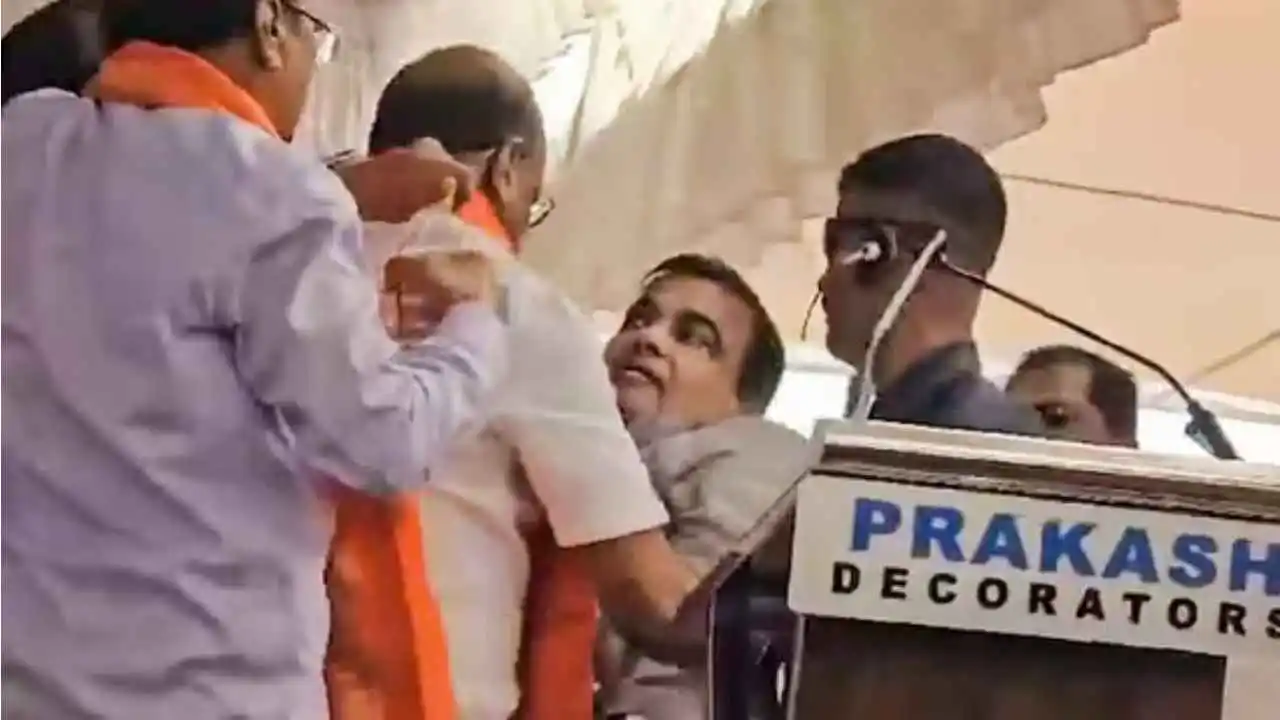
Union Road Transport and Highways Minister Nitin Gadkari collapsed while speaking at an election rally in Maharashtra’s Yavatmal on Wednesday afternoon. Fortunately, the senior Bharatiya Janata Party leader received prompt treatment and was able, after a brief pause, to get back up on stage and continue his speech.
A disturbing video of the incident – which was unfortunately streamed live on X (formerly Twitter), including by his own account – showed Nitin Gadkari being carried away by those on stage, many of whom rushed to form a shield around the BJP leader to give him, and those treating him, some privacy.
Nitin Gadkari took to X and informed that he felt uncomfortable due to the heat during the rally in Pusad, Maharashtra. But now he is completely healthy and is leaving for Varud to attend the next meeting. He thanked his supporters and well wishers for their love and good wishes.
Gadkari, who fought the elections in the first phase of voting as BJP’s candidate from Nagpur Lok Sabha seat, was campaigning for Eknath Shinde-led Shiv Sena leader Rajashree Patil in Yavatmal’s Pusad. Addressing the rally, the union minister said, he was confident that the people of Yavatmal district, which has a constant tendency towards development, will give victory to the BJP-Maha alliance, which believes in all-round development.
Gadkari posted on X that as the nation moves towards a developed India, under the leadership of Prime Minister Narendra Modi, significant work has been done in the last 10 years in the areas of roads and highways as well as health, education and other sectors across the country. He said many schemes of the central government were successfully extended to the rural areas. Due to this, along with the city, the people of the rural areas are also able to benefit from many important facilities.
The Yavatmal constituency along with Akola, Buldhana, Amravati, Hingoli, Wardha, Parbhani and Nanded in Maharashtra are scheduled to vote in the second phase of the Lok Sabha election on April 26.
-
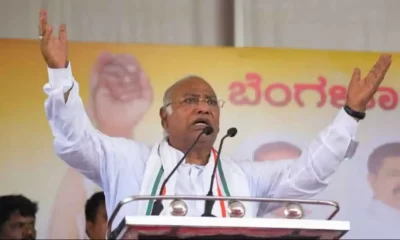
 2024 Lok Sabha Elections16 hours ago
2024 Lok Sabha Elections16 hours agoMallikarjun Kharge vows to continue politics till his last breath to defeat BJP
-

 2024 Lok Sabha Elections23 hours ago
2024 Lok Sabha Elections23 hours agoRahul Gandhi clarifies on wealth survey remark, says aim is to identify injustice
-

 2024 Lok Sabha Elections19 hours ago
2024 Lok Sabha Elections19 hours agoPM Narendra Modi slams Congress over Sam Pitroda’s inheritance tax remarks, accuses Congress of intending to impose higher taxes
-
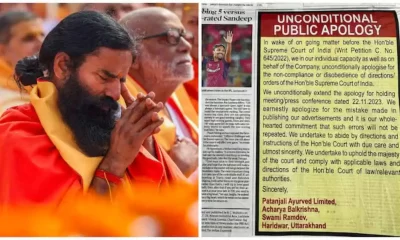
 India News22 hours ago
India News22 hours agoRamdev, Balkrishna publish bigger apology in newspapers after Supreme Court’s rap
-

 Entertainment18 hours ago
Entertainment18 hours agoMadhuri Dixit, Karisma Kapoor recreate Dil To Pagal Hai dance battle on Dance Deewane
-
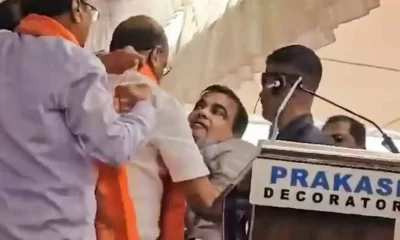
 2024 Lok Sabha Elections17 hours ago
2024 Lok Sabha Elections17 hours agoNitin Gadkari says he’s better now after collapsing at election rally in Maharashtra’s Yavatmal
-
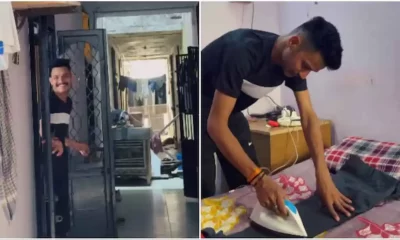
 Trending21 hours ago
Trending21 hours agoA waiter’s life: Social media users go emotional on watching viral video
-

 India News13 mins ago
India News13 mins agoTamannaah Bhatia summoned in illegal IPL streaming app case, to appear before cyber cell on April 29

